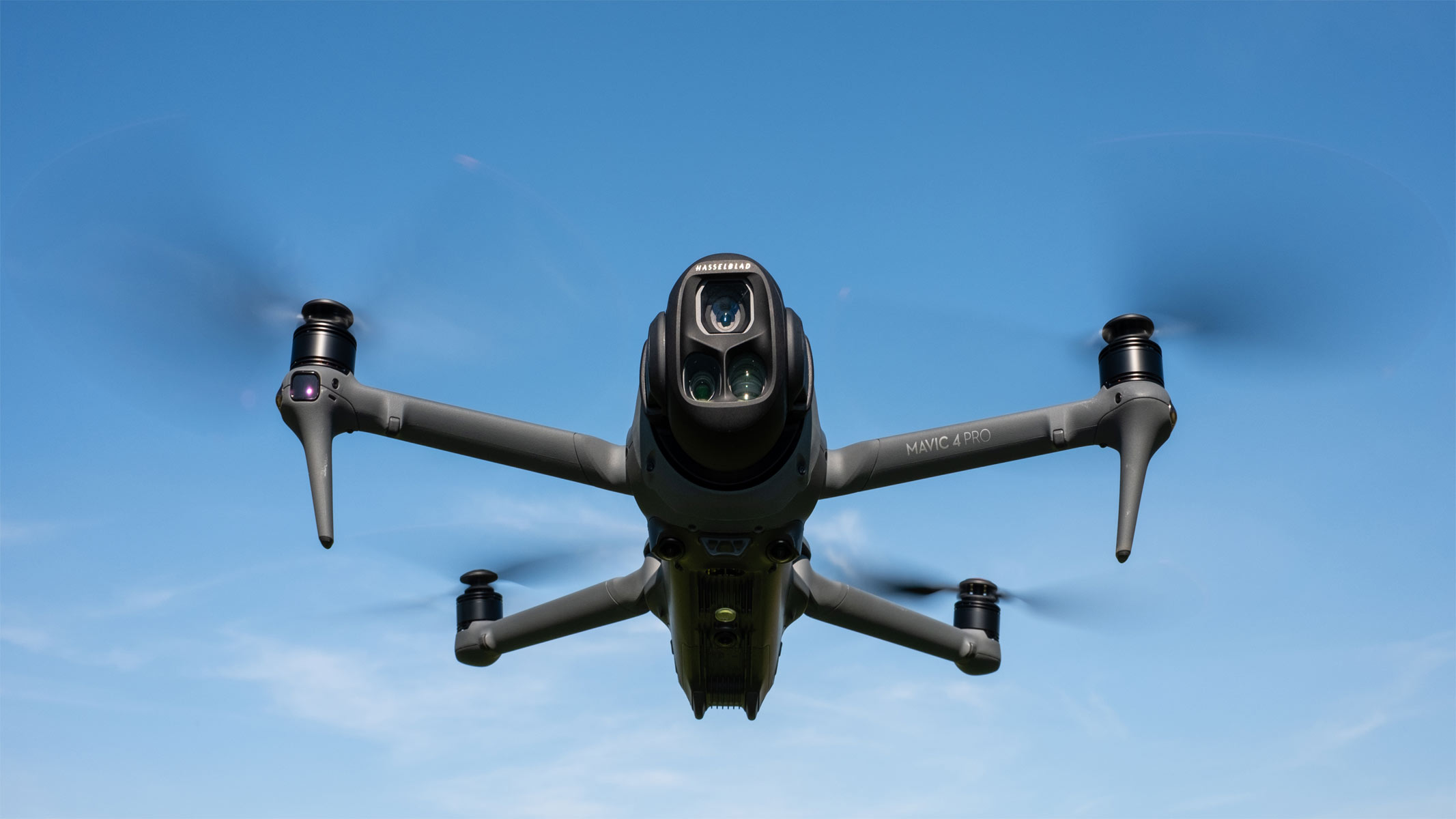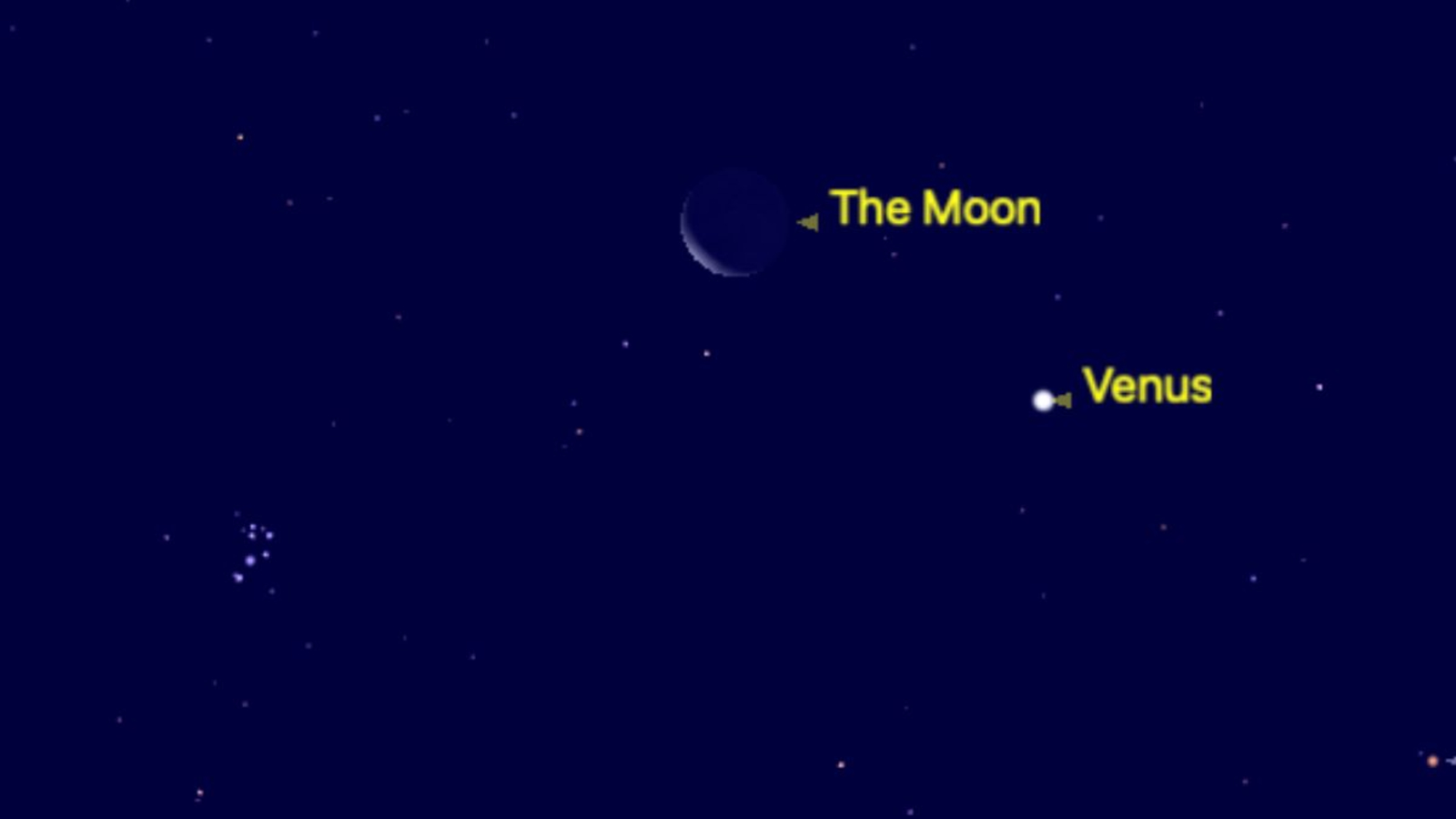Space Verdict
The DJI Mavic 4 Pro features an impressive triple camera design with high-resolution capture alongside excellent flight performance, features and functionality.
Pros
- +
Impressive features
- +
Fast and smooth flight
- +
Amazing camera movements
Cons
- -
Not a beginner drone
- -
Slightly larger and heavier than the Mavic 3 Pro
- -
More restricted than sub-250g drones
Why you can trust Space.com
With a spring in its step, or should that say flight, the DJI Mavic 4 Pro has launched to meet, and in many cases, exceed expectations of drone pilots around the world. The latest iteration of this popular drone series is packed with features and functionality that make it not only one of the best drones but also one of the best camera drones.
Weight: 2.34lbs / 1063g
Dimensions: 10.14x4.91x4.07 in. / 257.6x124.8x103.4mm folded / 12.94x15.37x5.32 in. / 328.7x390.5x135.2mm unfolded
Battery: 6654 mAh / up to 51 minutes flight
Charger type: USB-C cable / battery charging hub
Modes: Cine, Normal, Sport
Video transmission range: 18.6 miles (FCC), 9.32 miles (CE, SRRC, MIC)
Video resolution: Up to 6K
Frame rates: 6K up to 60 FPS / 4K up to 120 FPS / FHD up to 60 FPS / Cropped vertical 4/3 up to 4K 60 FPS, Tele 2.7K up to 60 FPS
The drone features the all too familiar folding design created by DJI, but its size and weight have increased slightly over the DJI Mavic 3 Pro. It looks similar, like a sibling, but with improved flight performance and a completely new camera and gimbal design. It's a far superior drone in every way.
The camera and gimbal redesign include a more spherical-shaped camera and robust gimbal that allow for vertical shooting and camera rotation, with the three cameras offering 28mm, 70mm and 168mm equivalent focal lengths. The gimbal can also tilt the camera upwards to an astonishing 70 degrees.
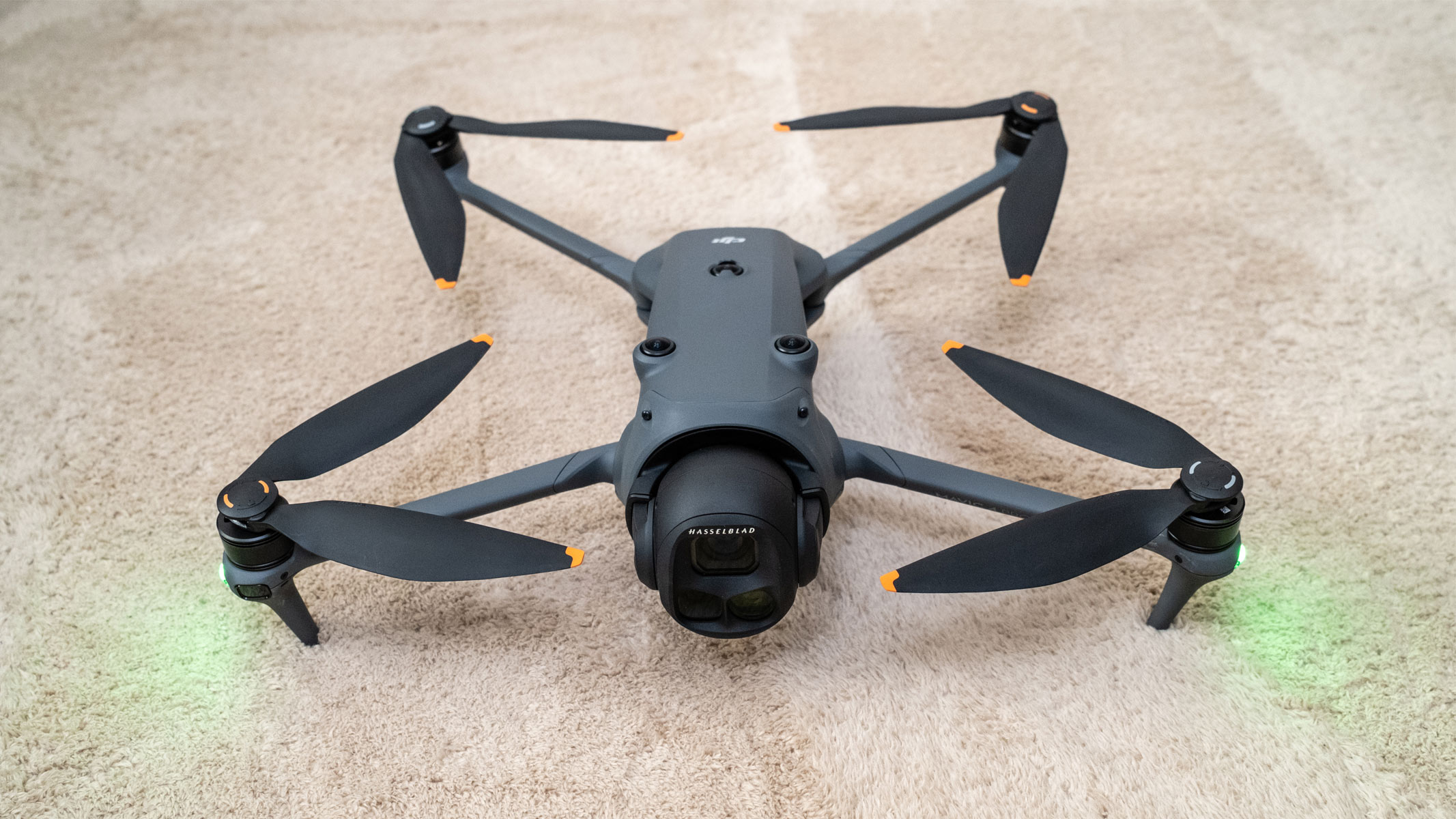
The main 28mm 4/3 Hasselblad camera offers a 100MP resolution and an adjustable f/2-f/11 aperture, the 70mm camera houses a 48MP 1/1.3-inch sensor and the 168mm camera features a 50MP 1/1.5in sensor. Video can be captured at up to 6K 60fps with the main camera and up to 4K 120 FPS / 100 FPS with the two telephotos.
DJI Mavic 4 Pro review
DJI Mavic 4 Pro review: Design
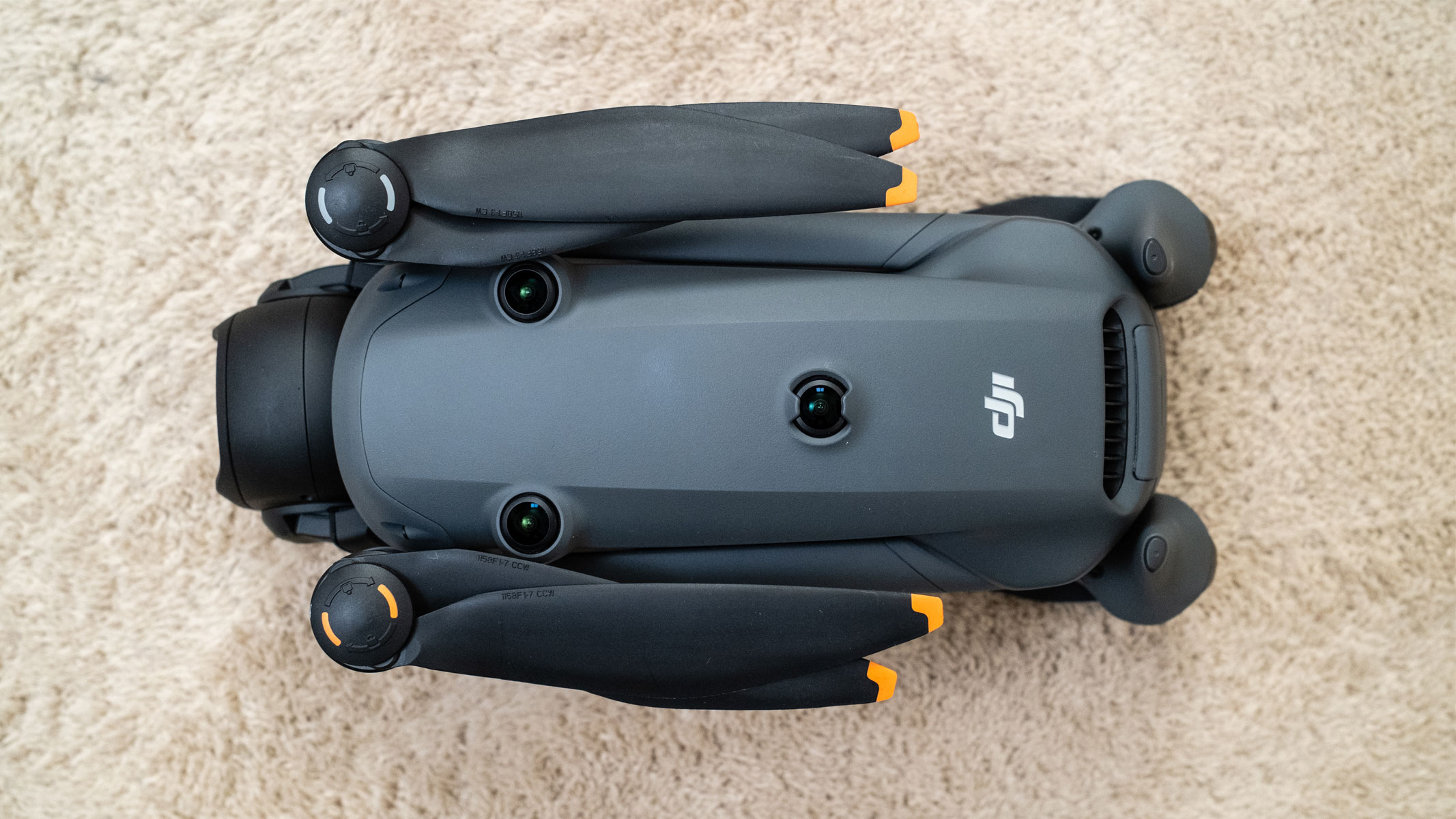
- High-quality folding design
- Complete camera rotation
- Excellent new controller
The Mavic 4 Pro features the standard folding design that we've become accustomed to, but the overall design is now more aerodynamic than the Mavic 3 models. Combined with larger propellers, there's an undeniable increase in speed, power and maneuverability. The camera and gimbal are also much larger, alongside a slightly larger drone with a weight that now comes in at 2.34 lbs / 1063g.
Moving back to the camera and gimbal, these have experienced a massive overhaul. There are still three cameras, but the camera unit has a more spherical shape and can be rotated from -40 to 400 degrees, which means you can rotate the camera during video capture for creative effects. The cameras can also be rotated 90 degrees for portrait orientation shooting, alongside the ability to tilt the camera in landscape orientation between -90 and 70 degrees.
Flight times per battery are claimed to be up to 51 minutes, which is an impressive claim, but in real-world testing, flight times while capturing photos and videos were typically around 37 minutes. Flights ended when the Mavic 4 Pro initiated Return to Home at 15% battery. More time could have been squeezed out of the batteries, but it's often safer to land and change batteries at this point.
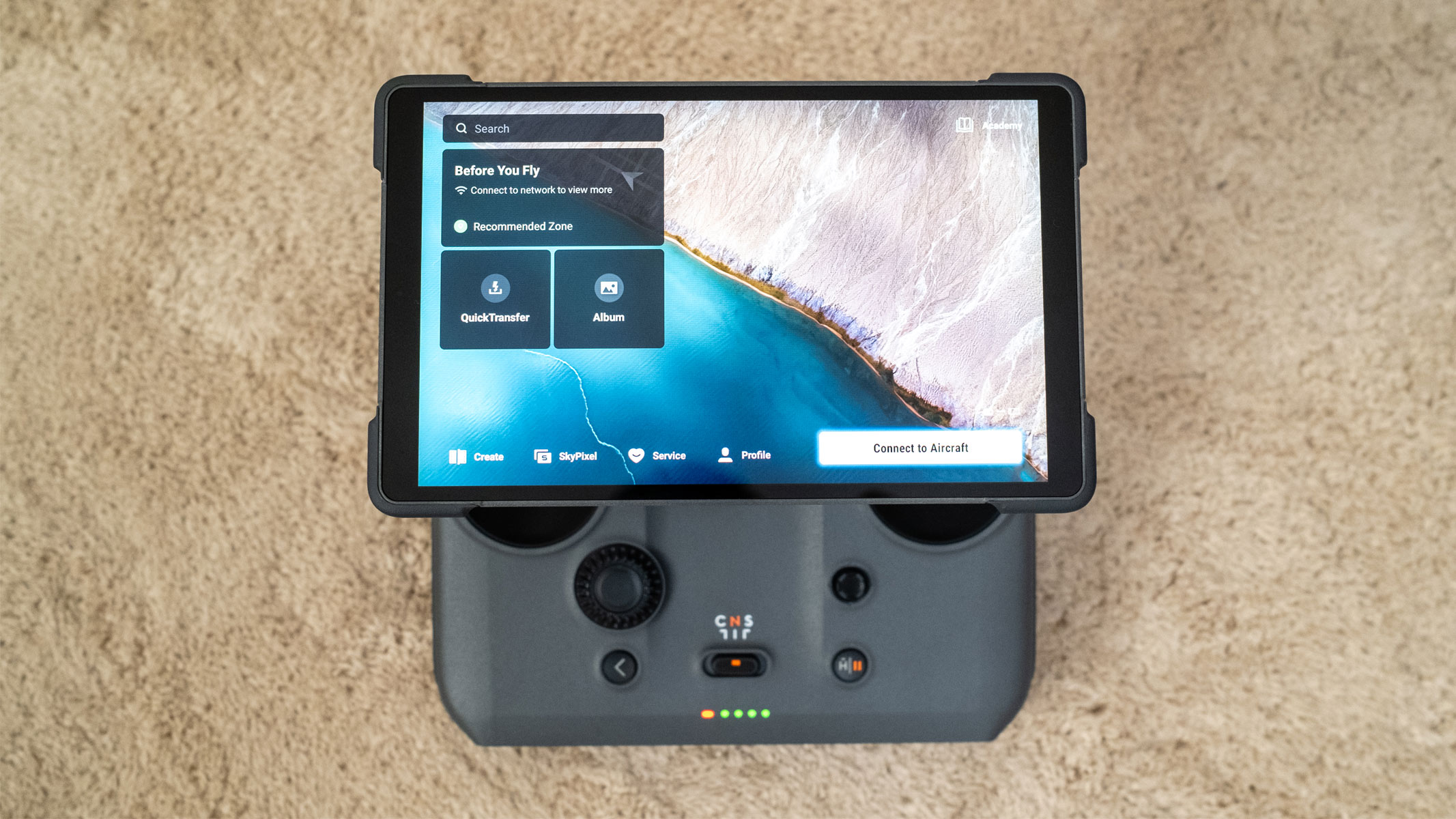
Both the drone and the controller switch on automatically when they're unfolded to make it quicker and easier to get into the air. The controller also goes into sleep mode when closed, unless you switch it off, to reduce start-up time if you're moving from one location to the next.
The new DJI RC 2 smart controller features a 2000-nit 7-inch high-bright Mini-LED display on an arm that holds it in front of the controls. This can be rotated 90 degrees when shooting in portrait format. When folded down, the screen hides and protects the control sticks, so you don't have to remove and stow them in the rear of the controller as you do with other DJI smart controllers.
The controls available on the controller are standard, although there's a new adjustment dial to change camera settings easily, and this is useful for adjusting exposure. The controller is also claimed to provide up to 4 hours of battery life. Other features include an HDMI port for video out, 128GB of built-in storage and audio can be recorded with the built-in mic or with a DJI Mic.
DJI Mavic 4 Pro: Functionality
- Advanced obstacle avoidance
- New Return to Home functionality
- Impressive car tracking
This is a fast and powerful drone with a top speed of 60.4mph in Sport mode, and a top speed of 40.3mph when tracking moving subjects. The smoothness and power of flight combined with the responsive controls make the Mavic 4 Pro a pleasure to fly, while hovering precision is impressive. Hover precision is naturally better in low wind conditions, although the drone does have a maximum wind resistance of 26.8mph.
The Mavic 4 Pro features a 0.1-Lux Nightscape Omnidirectional Obstacle Sensing system, where six low-light fisheye sensors, a forward-facing LiDAR and an infrared sensor on the bottom of the aircraft work in combination to provide obstacle avoidance even in low-light conditions. The standard with Brake and Bypass options available in the controller menu to select how the drone reacts when an obstacle is detected. The Omnidirectional Obstacle Sensing worked well in both daylight and low-light conditions during testing.
Return to Home has also been impressively improved, and the Mavic 4 Pro can take off and Return to Home without a GPS signal. For this, the drone uses real-time vision positioning and map construction technologies to capture flight paths to allow for Return to Home without GPS. This is especially useful when the GPS signal is lost during flight in complex environments.
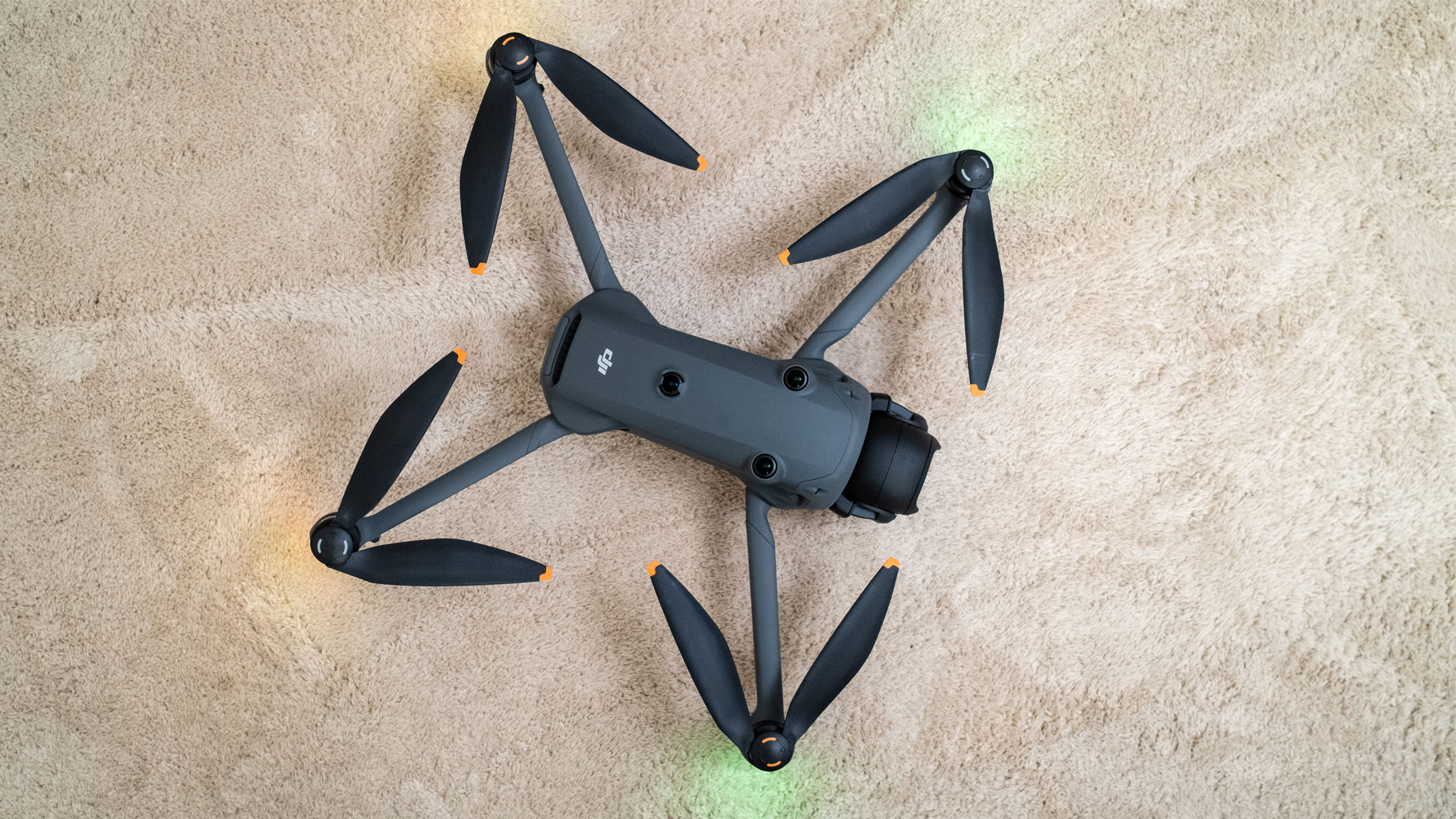
The only caveat of this feature is that it requires enough light on the scene to map the flight path, which suggests it won't work at night. There's also Dynamic Home Point where the Home Point is set by the controller location rather than using the take-off point. This could be useful when tracking vehicles if you're a passenger in the vehicle.
Subject tracking is nothing like the DJI Flip or Neo, it's not for close subjects or with multiple autonomous close tracking options, but it does work well in general, with a particular emphasis on car tracking. With this, the Mavic 4 Pro locks onto selected vehicles successfully once selected, and maintains tracking when the car is partially obscured by trees, as claimed. It's best for top-down and rear tracking, and it didn't want to fly backwards in front of and facing the car when this was attempted.
Other useful features include Quickshots automated flight patterns, Free Panorama, Timelapse, the ability to transfer files to your computer without being switched on, file transfer to the DJI Fly app on your phone using off-state quick transfer over WiFi 6 and many more. The Mavic 4 Pro also uses DJI O4+ with 10-bit HDR Video Transmission up to 18.6 miles. The controller connection and camera feed were never an issue during testing within safe and legal flight distances.
DJI Mavic 4 Pro review: Performance
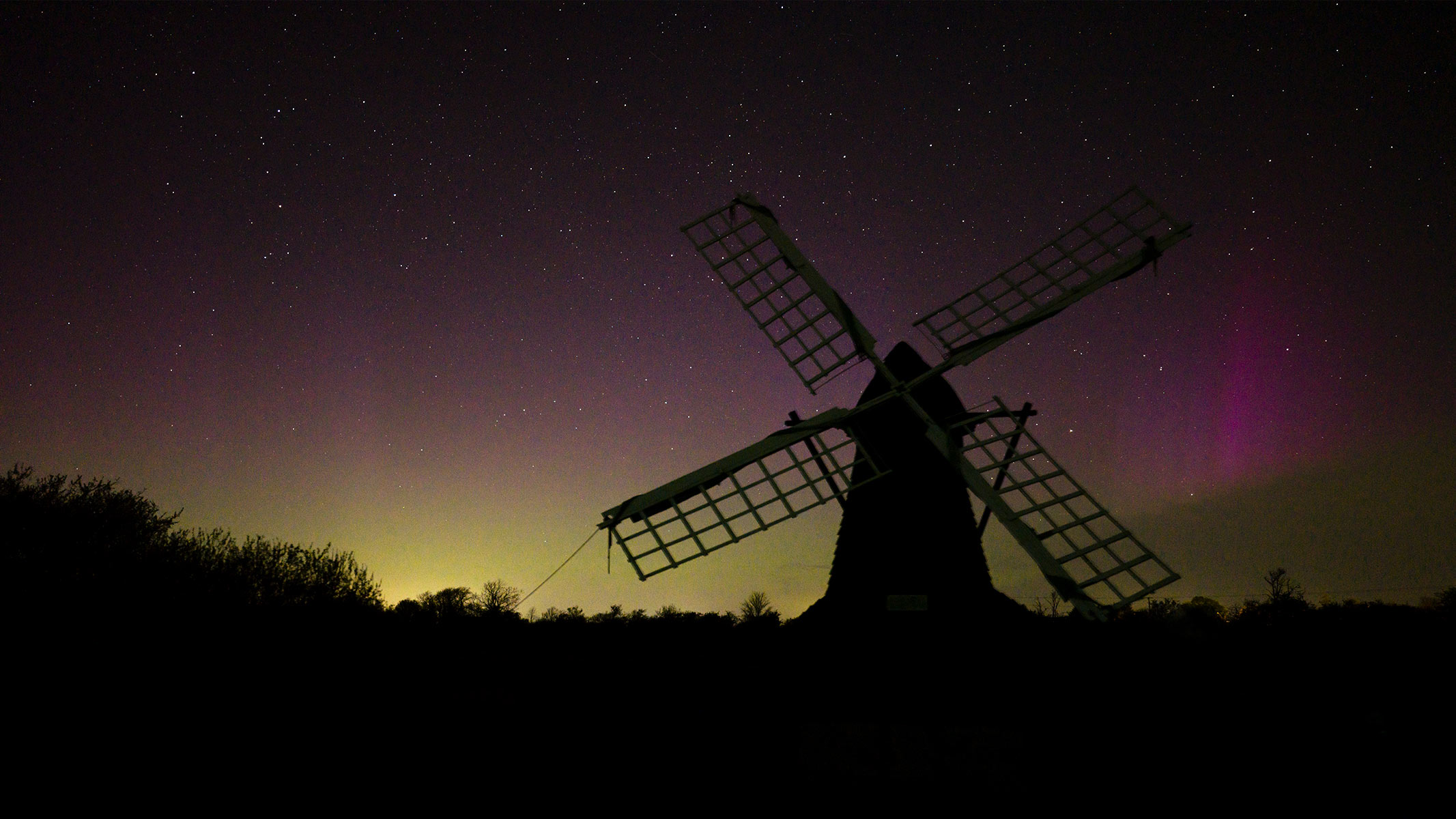
- Three cameras
- Up to 6K video capture
- Up to 100MP photos in Raw and JPEG
The main Four Thirds Hasselblad camera features a 28mm equivalent focal length and an adjustable f/2.0-f/11 aperture. F/2.0 is an aperture setting that makes astrophotography more achievable with the drone, although you still have to use ISO 3200 to keep exposure times at 3.2 seconds to avoid camera shake in low wind conditions.
The new Four Thirds sensor in the main camera can be set to capture at an impressive 100MP or 25MP, the 70mm equivalent camera features a 48MP/12MP 1/1.3-inch sensor and the 168mm equivalent camera uses a 50MP/12.5MP 1/1.5 in. sensor. Both of these telephoto cameras have a fixed f/2.8 aperture, and all cameras can capture photos in Raw and JPEG formats. The higher resolution captures with the cameras typically appear slightly softer than lower resolution photos, but additional sharpening in Lightroom works well with Raw files.
Image quality is excellent overall, although there is a small amount of fall-off in sharpness towards the edges of the frame with all three cameras when capturing photos. The cameras feature Dual Native ISO Fusion, which aims to reduce noise in photos and videos. Video image quality, as with all drones, is better than photo quality, but this is likely due to less of the sensor being used and the moving rather than still image. Color rendition is also fantastic, with bright and realistic colors captured.

The main camera can capture video at up to 6K 60 FPS, the 70mm can capture up to 4K at 120 FPS and the 168mm up to 4K at 100 FPS. The main camera can also capture 4K video at up to 120 FPS, so all three can capture slow motion when required. Cropped vertical video is also available with all three cameras. The main camera can shoot up to 4K 60 FPS, and the telephoto cameras can capture up to 2.7K up to 60 FPS. You can also rotate the camera to portrait orientation to capture photos and video.
Color profiles for video capture include Normal for straight out of camera use, D-Log, D-Log M and HLG (HDR) for use in professional workflows where color grading is required. When shooting HDR, the 28mm can capture up to 16 stops of dynamic range, the 70mm up to 14 stops and the 168mm up to 13 stops. The 512GB Creator version of the Mavic 4 Pro can also capture video in the ALL-I 4:2:2 codec. This is the most advanced of the two Mavic 4 Pro models, offering additional storage and advanced video functionality.
DJI Mavic 4 Pro review: Cost
The Mavic 4 Pro is extremely well-priced considering the features and functionality of the drone, with three kits available. The basic DJI Mavic 4 Pro (DJI RC 2) kit includes the Mavic 4 Pro, RC 2 smart controller, 64GB of internal storage, an Intelligent Flight Battery and accessories. This basic kit is $TBC / £1879.
The DJI Mavic 4 Pro Fly More Combo costs $TBC / £2459, and this includes all of the above plus two additional Intelligent Flight Batteries, a DJI 100W USB-C power adapter, a battery charging hub and a shoulder bag.
The premium kit is the DJI Mavic 4 Pro 512GB Creator Combo, and this includes everything in the standard kit alongside 512GB internal SSD storage, a 240W power adapter, two additional Intelligent Flight Batteries, a parallel battery charging hub, a USB-C to USB-C high-speed data cable and a shoulder bag for $TBC / £3209.
Due to the need to adjust the market strategy, the DJI Mavic 4 Pro will not be available in the US upon its initial release. Therefore, we do not know at the time of writing how much it will cost in the US.
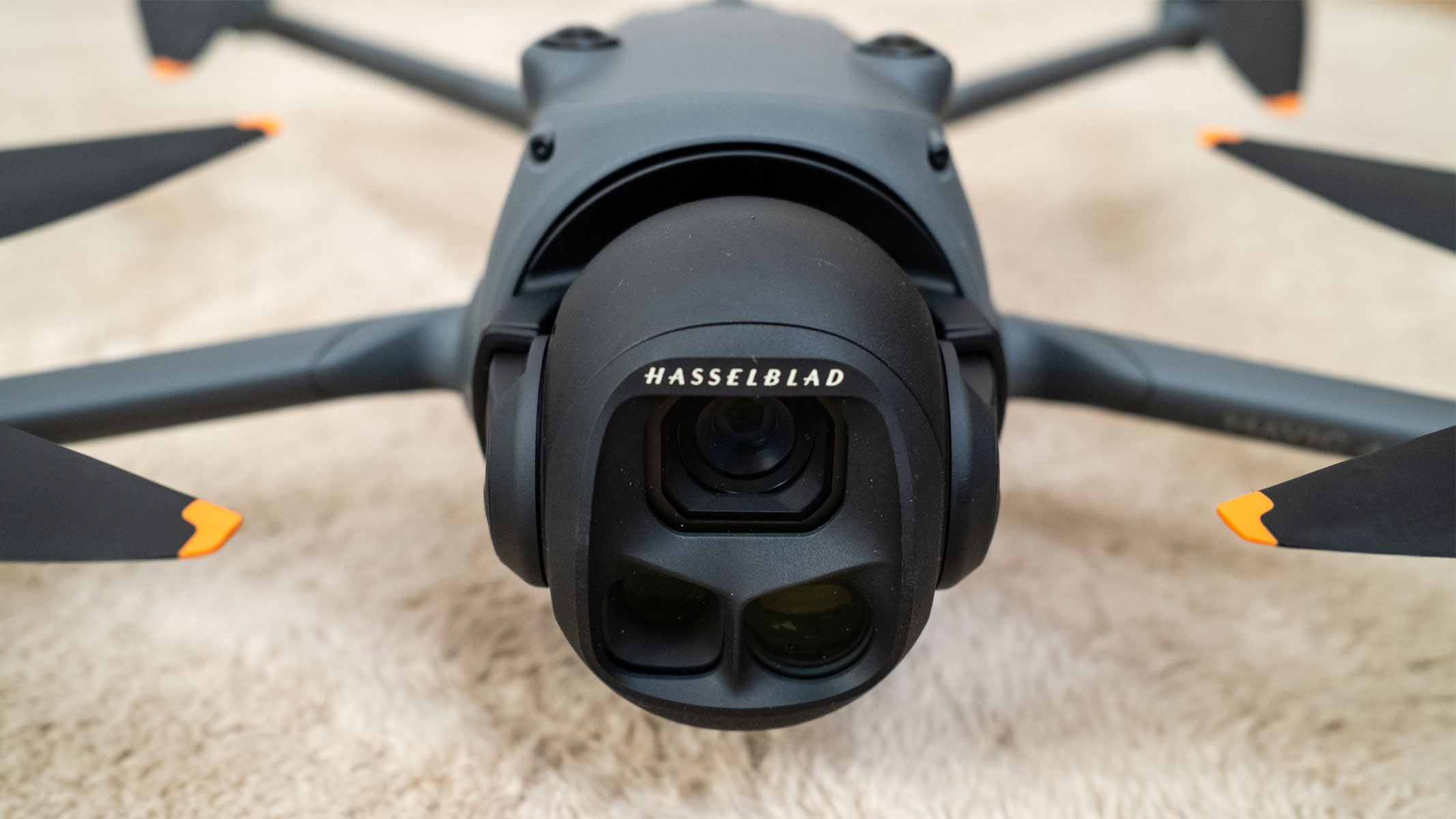
Should you buy the DJI Mavic 4 Pro?
The DJI Mavic 4 Pro is by far the best Mavic drone ever made and takes drone technology to new heights. The image quality and features of the three cameras are fantastic, with professional video capture possible with the drone. The camera can also be rotated between -40 to 400 degrees to create an effect like a camera being rotated on a video gimbal. Plus, the entire camera unit can be rotated 90 degrees for upright shooting with all three cameras, while the camera can be tilted 70 degrees upwards.
Flight performance is impressive thanks to the speed, power and agility of the drone, and the Return to Home functionality has seen a serious upgrade. This is undoubtedly aimed at experts and professionals, but it's incredibly easy to use, so it's also beginner-friendly if you can justify the cost. The price of the Fly More Combo is also excellent value for money and comes as a welcome surprise.
If the DJI Mavic 4 Pro isn't for you
The DJI Inspire 3 is an extremely expensive professional drone with some stunning features and functionality. Not least, a 44.7MP full-frame camera with interchangeable lenses, Hollywood-grade video functionality up to 8K and is also ideal for inspections and surveying.
The DJI Mini 4 Pro is more regulator-friendly, not to mention a more compact and transportable drone capable of professional and amateur use. This is the best sub-250g drone available and features impressive obstacle avoidance that will be useful to beginners and professionals alike.
If you'd prefer to capture immersive FPV video, the DJI Avata 2 is the drone for you. This drone can capture fantastic 4K video, and with the DJI RC Motion 3, it's incredibly easy and intuitive to fly. FPV experts can also buy the DJI FPV Remote Controller 3 for full manual flight.
Join our Space Forums to keep talking space on the latest missions, night sky and more! And if you have a news tip, correction or comment, let us know at: community@space.com.
James is an award-winning freelance landscape and portrait photographer, as well as a highly experienced photography journalist working with some of the best photography magazines and websites with a worldwide audience. He’s also the author of The Digital Darkroom: The Definitive Guide to Photo Editing. www.jamesaphoto.co.uk
You must confirm your public display name before commenting
Please logout and then login again, you will then be prompted to enter your display name.
